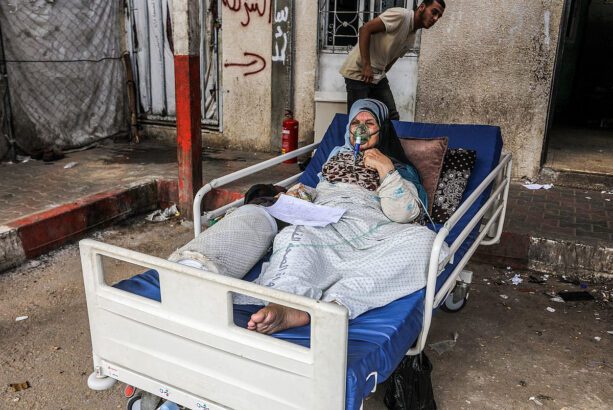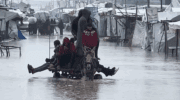Denied entry or medical supplies after Israel’s takeover of Rafah, volunteer physicians describe a policy designed to prevent their life-saving work.
by Patricia Martinez Sastre, reposted from +972 Magazine January 30, 2025
In an attempt to save the lives of Palestinian children hospitalized in Gaza, Dr. Ayaz Pathan did something he never thought he would: allow others — aged 8 to 14, the same as his own children — to die. “We didn’t have an [available] bed for them,” he recounted of his time at Nasser Hospital in Khan Younis, the largest in southern Gaza. “They were on the floor, and we pulled them to the side while they were still breathing [and] their heart was still beating, knowing that their injuries were unlikely to be survivable. Would they have survived in Jerusalem? Absolutely. In the U.S.? Definitely.”
Pathan, an emergency room physician from North Carolina, volunteered in Gaza from late July to mid-August 2024 as part of what are known as Emergency Medical Teams (EMTs) — groups of foreign medical professionals including surgeons, emergency physicians, nurses, and anesthetists, that deploy amid humanitarian crises to provide care when the local health care system is overwhelmed. In Gaza, where the health care system is near collapse after the Israeli military has systematically targeted health care facilities and professionals, these foreign medical missions have become particularly vital.
Pathan’s experience is far from unique. In testimonies obtained by +972, six specialist doctors who worked in Gaza and eight officials at the UN and NGOs that negotiate with Coordinator of Government Activities in the Territories (COGAT) — the Israeli military body that oversees humanitarian aid policies in the occupied Palestinian territories — described an emergency response system wholly unprepared to handle the catastrophic conditions on the ground.
For months prior to the ceasefire, Israel imposed severe restrictions on the entry of foreign doctors and humanitarian and commercial cargo into Gaza, while attacking Palestinian police forces guarding aid convoys, which allowed armed groups to loot the supplies. In the four weeks leading up to Jan. 11, fewer than 2,000 trucks entered the enclave, or around 70 daily; an analysis by Oxfam determined that 221 trucks of food alone were needed every day to guarantee the minimum calorie intake for everyone in the Strip. Of those that entered, only 13 carried medical supplies.
Since the ceasefire took effect on Jan. 19, the number of aid trucks entering Gaza has increased substantially. However, the limited number of doctors allowed to enter, often with little to no medical supplies, leaves specialized health care largely unavailable in the enclave. Meanwhile, the Rafah border crossing with Egypt remains closed, and medical evacuations abroad — critical for over 12,000 according to the World Health Organization — remain extremely rare.
‘They know we’re here to help, so why not let us in?’
All medics who spoke to +972 singled out May 7, 2024 — the day Israel seized full control of the Rafah crossing — as the moment things changed. Before that date, there was virtually no cap on the number of medical professionals entering Gaza through Rafah, nor on what supplies they could carry. Foreign doctors who worked in the Strip said they could bring in “essentials” like baby formula and large quantities of dry foods to distribute, as well as small medical equipment, including butterfly ultrasounds, surgical drapes, gloves, and bandages.
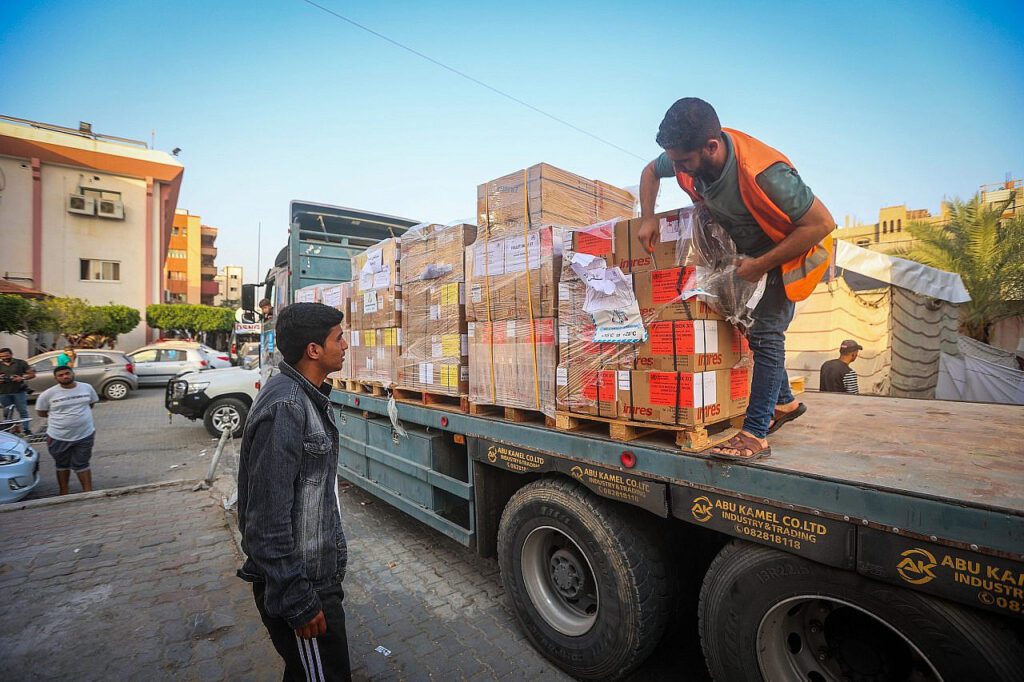
Dr. Tammy Abughnaim, an American physician who first entered Gaza in March 2024, recalled how she and seven of her colleagues were able to carry with them a total of 42 bags filled with equipment and supplies. Egyptian authorities inspected their suitcases at the airport and again at the border, and confiscated only a few items, such as strong pain control medications like morphine or ketamine.
Since May 7, however, the vast majority of foreign medical missions seeking access to Gaza have been forced to enter through Israel’s Kerem Shalom crossing, where they have been subjected to much more stringent inspections, and prevented from bringing in virtually any medical supplies or tools.
“Aid workers from the entire world are trying to come to help. But it’s been restricted to about 20 [individual workers] in armored vehicles entering [weekly] on either a Tuesday or Thursday,” said Dr. Nabeel Rana, an American vascular surgeon who volunteered in Gaza in July and October 2024. “And of those, only about seven or eight are [reserved] for medical personnel,” he added, calling it a “dramatic change” compared to the process before May 7.
Doctors who entered Gaza through Kerem Shalom have been advised by the UN, following COGAT’s policy, to only travel with one suitcase and a carry-on, and are prohibited from taking in anything not for their personal use, including medical equipment. Any flagged items — more than the permitted $2,000 in cash, too many soap bars, even duplicate laptops — would be confiscated and directly result in delayed convoys or doctors being denied entry.
“They know we’re here to help, so [why not] let us in with supplies?” Pathan told +972. “If I’m bringing in 10 ultrasounds, X-ray them five times, make sure they are just ultrasounds. But ultimately, there’s no scientific knowledge to turn an ultrasound into a bomb, is there?”
These restrictions, sources said, have reduced medics and doctors to practicing “damage control rather than medicine,” often forcing them to make impossible decisions about which patients to try and save and which to leave to die — most often women and children.
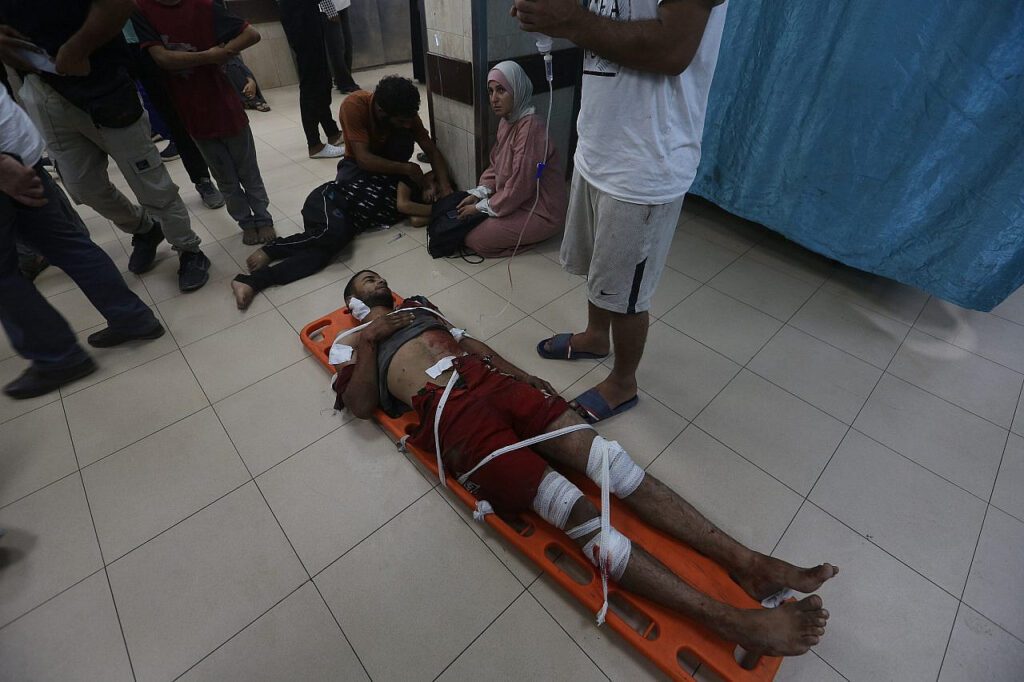
Foreign physicians working in Gaza who spoke to +972 reported having to reuse unsterilized ventilator tubes on patients, tie off limbs with large rubber bands in place of tourniquets, and remove children who were “very much alive” from the few ventilators available to prioritize others with better survival chances.
“There’s no soap [inside Gaza]. They’re using iodized salt water to wash their hands and to sterilize equipment,” Abughnaim told +972. The second time she entered Gaza, at the end of July, she and her colleagues had to be much more creative. “You can’t really bring in a large quantity of soap without that being suspicious, so I brought little sheets of soluble soap we could make bottles with when I got there.” She also revealed that she hid unpacked medicine in her bag to make it look like hers, making it easier to sneak in innocuous supplies like trauma shears and blood pressure cuffs.
In response to +972’s inquiry, a spokesperson for COGAT said that Israel “does not restrict the number of humanitarian teams that can cross into the Gaza Strip on behalf of the international community, subject to technical arrangements required for security reasons,” and that the Kerem Shalom crossing has been specifically designated for this purpose. They also noted that a “formal request must be submitted” for volunteer medical teams to bring equipment into Gaza, a process required because “terrorist organizations in the Gaza Strip often exploit civilian equipment and humanitarian infrastructure for terrorist activities.”
A game of cat and mouse
The limitations imposed on EMTs entering Gaza would be less dangerous if “the other part of the same equation” functioned, two sources told +972, referring to the entry and safe distribution of aid and medical equipment through humanitarian aid convoys. But Israel, the sources said, had repeatedly obstructed that form of aid provision as well, particularly in northern Gaza, where virtually no humanitarian aid had been allowed in over the past four months.
“Since May 7, all humanitarian operations in Gaza [rely] on this UN convoy that happens twice a week, carrying a maximum of eight medical personnel each time,” a UN source, speaking on condition of anonymity in fear of losing leverage, told +972. “We also don’t have enough people inside Gaza to be using internationals as drivers [as COGAT demands],” he added, estimating the total number of foreign staff at any given moment to range between 69 and 83.
This official, like others +972 interviewed, described the setup as “purposely made to not facilitate humanitarian activities” in Gaza, and “much more bureaucratic than solution-oriented.” They mentioned, as an example, that the UN only got “preliminary” Israeli approval to bring in two new armored vehicles for the distribution of humanitarian aid at the end of December, after they had sat at a border crossing for four months.
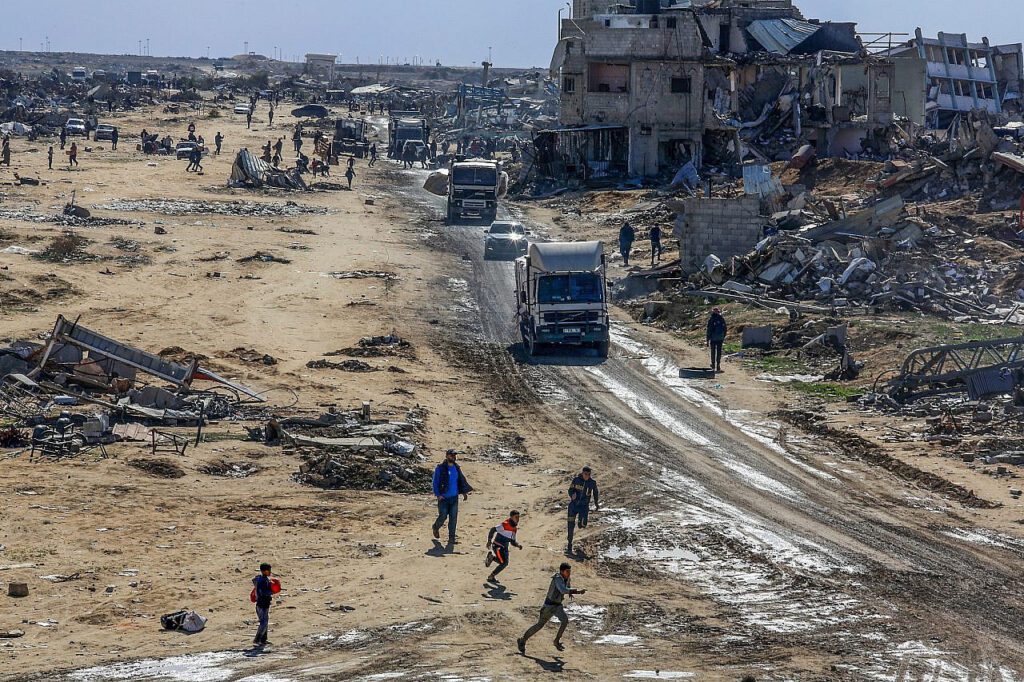
“All equipment and supplies are really difficult to bring in,” the UN official noted. “Under the ‘dual-use’ policy [where Israel restricts items based on the claim that they could also be used for terrorist activities] everything can be justified. Ventilators are getting delayed, oxygen concentrators are getting delayed. From a humanitarian medical perspective, it doesn’t make sense. But we’re not the ones holding the guns.”
A worker at MedGlobal, a humanitarian nonprofit that provides emergency response and health programs in Gaza, who spoke to +972 anonymously for fear of Israeli retaliation, described the procedure to get even life-saving tools cleared by COGAT as “a cat and mouse game.” He explained how items that are at first rejected could be approved weeks later if UN agencies, or the U.S. government, put pressure on Israel.
“This again made us feel like it’s a game of power and influence,” he said. “What are the security concerns if tent poles were banned for the first six months, but then later allowed in? Or just recently, generators were only allowed up to 32 kilowatts and now they’ve increased that up to 40 kilowatts,” he noted. “When there is pressure from above, [for instance] from the U.S., all of a sudden those security concerns seem less real. This gives us the impression that they are just trying to give us the bare minimum as opposed to being an honest broker who wants to facilitate aid in.”
But even U.S. pressure can only go so far. On Oct. 13, the U.S. State and Defense Secretaries issued a joint 30-day ultimatum to the Israeli government, demanding it “surge all forms of humanitarian assistance” into the Gaza Strip and “end isolation of northern Gaza,” warning that failure to comply could jeopardize military aid.
Exactly one month later, after Israel failed to comply with both demands, Israeli Defense Minister Israel Katz and Strategic Affairs Minister Ron Dermer replied to the U.S. Secretaries, informing them that the number of aid trucks entering Gaza in September and October had, in fact, decreased. They attributed this “largely to operational reasons and specific intelligence warnings of attacks that were being planned at the crossings and using the humanitarian aid delivery system,” without backing those claims with any evidence.
In the letter, Israel also noted that 30 items had been removed from the restricted list of “dual-use” items in preparation for winter. These articles — cleared for entry only from Nov. 13 — included essentials such as large tents, tent elevation platforms, portable toilets, sleeping bags, hand warmers, and rainwater storage systems. For the first time, personal protective gear was also allowed, but sources told +972 that aid workers were required to take the equipment with them when they left Gaza.
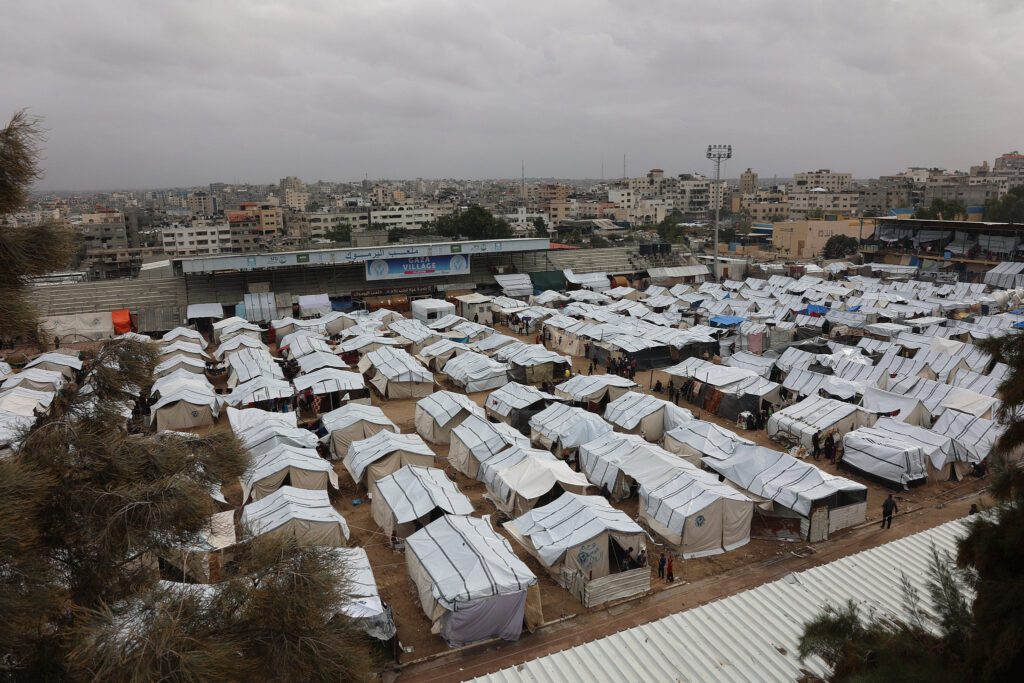
According to the MedGlobal employee, COGAT provides no clear guidelines for its inspection process. Bulk items submitted to pre-clearance can remain pending for weeks or months, if they ever get approved at all, and most life-saving equipment such as ventilators or oxygen concentrators had been outright rejected in the last six months.
The most difficult aspect of delivering aid into Gaza, according to multiple sources, is coordinating entry after Israel has granted approval for the bulk of items. Aid organizations are required to provide COGAT with exhaustive details about the cargo, including information about the driver, the vehicle’s license plate, the origin of the items, the source of funding, and the final delivery destination. However, even when all these requirements are meticulously met, Israeli authorities routinely deny shipments without any clear explanation.
“COGAT acts like gaslighting aficionados. They will reject the entry of supplies and tell you that it was your fault, that there was an error in the form or that you didn’t coordinate the entry with the World Health Organization. There are a million reasons why a truck doesn’t get in,” the MedGlobal worker explained. In early September, the NGO eventually succeeded, after four to five attempts, in bringing 25 oxygen concentrators into Gaza, but they haven’t managed to replicate that success since then.
The COGAT spokesperson told +972 that Israel “maintains ongoing communication with international community representatives and with local authorities who raise medical needs from the field,” and works to address those needs, whether “it involves the entry of equipment or the coordination of humanitarian activities.” They claimed that since the beginning of the war, “tens of thousands of tons of medical supplies have entered, including medications for cancer patients, insulin pens, anesthetic agents, X-ray machines, CT scanners, and oxygen generators for hospitals.”
Discrimination against Palestinian medics
All medics who spoke to +972 described an overwhelming sense of uncertainty leading up to their deployments. Permission to enter Gaza — or to leave after completing their missions — was often confirmed just hours before the scheduled departure of their medical convoys. In many cases, COGAT would arbitrarily delay both entry and exit dates for weeks without any explanation, affecting scheduled surgeries back in their home countries.
Most medical interviewees also affirmed that Israeli authorities systematically deny entry into Gaza to doctors of Palestinian descent, even if they hold American, Canadian, or British citizenship. Some NGO workers noted that even medics with no direct connection to Palestine but hailing from Muslim-majority countries, such as Egypt or Kuwait, have been barred entry by COGAT without any explanation.
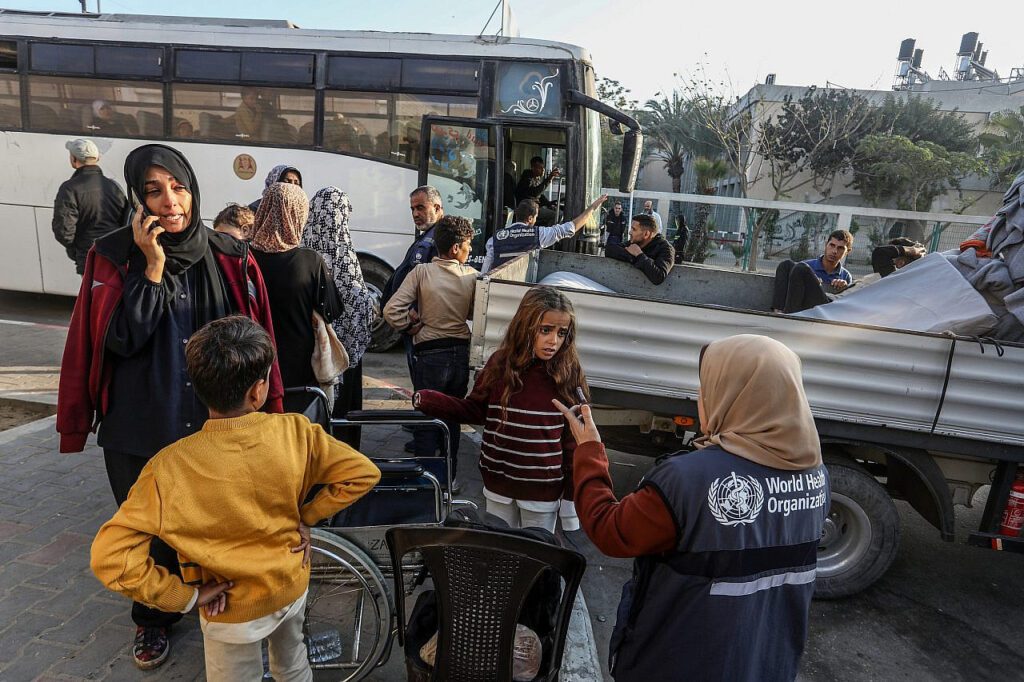
“I’m not Palestinian and I have no family there, but I feel like they’re equal to us, so why would I not go if I have the skills to help them?” one source, who wished to remain anonymous, told +972. After attempting to return to Gaza for the third time this January, they were again denied by Israeli authorities with no explanation.
Last July, a CNN report revealed that WHO was advising aid groups not to bring in medical professionals with dual citizenship or Palestinian background to Gaza — even if only through a parent or grandparent — as they were having “issues with permits,” which the organization described as Israel’s new policy, according to internal memos. In response to +972’s inquiry about this discriminatory policy, COGAT’s spokesperson declined to comment.
This open display of racial discrimination was also reported firsthand by American health care workers and British and Canadian physicians who had all volunteered in Gazan hospitals. “Incredibly, Israel continues to block health care workers of Palestinian descent from working in Gaza, even American citizens. This makes a mockery of the American ideal that ‘all men are created equal’ and degrades both our national ideals and our profession,” the American volunteers wrote in October to President Joe Biden and Vice President Kamala Harris. “Our work is lifesaving. Our Palestinian health care colleagues in Gaza are desperate for relief and protection, and they deserve both.”
Two officials at the Medical Aid for Palestinians (MAP), a UK-based charity that has had several of its volunteers denied entry into Gaza, told +972 that the ban on workers of Palestinian descent is more of an open secret than an explicit prohibition. “The form that we need to send to COGAT asks for the name of the father and grandfather, [and] they specifically ask about any Palestinian background. So it is not said to be prohibited, but I’m not sure that if you [say that you are of Palestinian descent] you can enter Gaza.”
Dr. Ana Jeelani, a pediatric orthopedic surgeon and MAP volunteer from the UK, entered Gaza in March of 2024 with a team of volunteers consisting of a British-Indian anesthesiologist, four Jordanians, and one Kuwaiti. All of them got in without issues, she said, along with 54 suitcases full of medical equipment and food. But last July, when a team of five tried to enter to provide care at Nasser Hospital in southern Gaza, Israel rejected two of them.
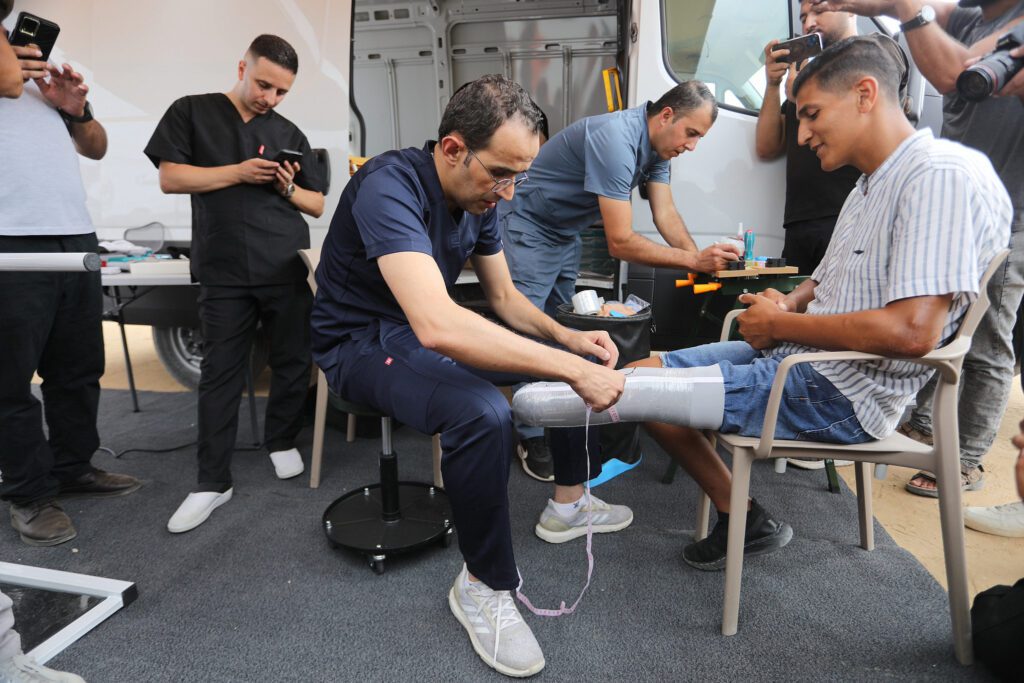
“They got to Jordan and then they didn’t get clearance, even after waiting for two weeks. COGAT gave no reason why they were denied entry, and [they] could only take one suitcase and personal belongings,” she said. “It’s just nefarious. You don’t know until the night before whether you got clearance. COGAT keeps you to the last minute, and they can decline your clearance for whatever reason.”
One of the people rejected was Dr. Jeelani’s British-Indian colleague, a Muslim woman, who waited in Amman for two weeks only to find her name persistently listed as “pending” by COGAT. Speaking anonymously, she remarked that the Israeli policy is so unpredictable that even when humanitarian organizations carefully select individuals they believe will be granted entry, “it’s almost a gamble.” Some of the doctors interviewed by +972 suggested that individuals who had previously been allowed into Gaza, but were later left in limbo, may have been targeted in retaliation for speaking out about what they had witnessed. This claim could not be independently verified.
The restrictions on foreign doctors, who would otherwise be a glimmer of hope for Gazans, is yet another blow to a health care system that has had more than 1,000 of its professionals killed, most of its hospitals destroyed, and many staff arbitrarily arrested.
Patricia Martínez Sastre is a journalist based in Jerusalem. She previously worked as a correspondent in Nairobi, and investigated prosecutorial misconduct for Columbia Journalism Investigations and NPR in New York City. She began her journalistic career as a freelance correspondent in Brazil.
RELATED ARTICLES:
- Israel Is Blocking 11 American Doctors & Nurses From Leaving Gaza
- Doctors in Gaza Say They Have No Doubt Israel Is Targeting Them
- ‘Text Me You Haven’t Died’ – My Sister was the 166th Doctor to Be Murdered in Gaza
- Dr Abu Safiya symbolized humanity in Gaza, as it is destroyed
- Dr. Hussam Abu Safiya’s life in danger due to torture: Immediate international intervention needed for his release
- Gaza’s Stolen Healers: Hundreds of Palestinian Doctors Disappeared Into Israeli Detention
- The Guardian’s excellent video about Israel’s attack on Gaza’s hospitals has one fatal flaw
- Gaza’s chronically ill patients are out of medicine, doctors, and hope

